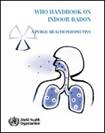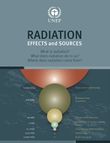Revision as of 19:10, 7 May 2018 by icrpaedia>Clement
It’s important to measure the radon in your home, and to take simple steps if you find that it is high.
Radon in homes originates from the soil and rock surrounding it, and sometimes from building materials.
Often, the pressure indoors is lower than the pressure in the soil, which naturally draws soil gas into the home.
Other factors influencing radon levels in the home include: the soil composition and radon concentration, the area of the building in contact with the ground, the air-tightness of the building, the floor level and size of rooms, and lifestyle choices like opening windows and doors.
Typical Radon Levels
Typically, the average radon concentration in outdoor air is around 10 Bq/m3, although it be as low as 1 Bq/m3 in some places and higher than 100 Bq/m3 in others.
Indoors, average radon concentrations are usually higher, averaging around 50 Bq/m3, with some places less than 10 Bq/m3 and others 10,000 Bq/m3 or more.
Governments usually set reference levels for indoor radon in the 100-300 Bq/m3 range
| The United Nations Scientific Committee on the Effects of Atomic Radiation (UNSCEAR) is the leading international body on radiation levels and effects. Visit the UNSCEAR website or read the UNEP report on "Radiation Effects and Sources" based on UNSCEAR work to learn more
|
Quotes from ICRP Publications
Publication 126 paragraph 22-25
While the radon concentration from soil to outdoor air is diluted rapidly, this is not the case if the flux enters closed premises such as dwellings … there is a pressure differential between the soil and the foundations of the building. This causes an enhanced flow of radon-rich soil air...
The transfer of radon from the soil to buildings depends on several parameters:
- the composition of the soil (chemistry, geology, soil moisture, and permeability to radon);
- the concentration of radon in the soil;
- the difference in pressure between inside and outside of the considered building or location, between the soil and the atmosphere surrounding the building, and between the soil and the lower rooms of the building;
- the area of building in contact with the ground; and
- the air tightness of the outer shell of the building, including the presence of cracks, pipe ducts, cable ducts, etc., especially in the floors and foundations of the building.
The transfer of radon within buildings also depends on several factors:
- the circulation of air in the building depending on ventilation and air conditioning;
- the meteorological and seasonal parameters, mainly the temperature difference between outside and inside air;
- the floor level and the size of the rooms; and
- the lifestyle choices, such as opening doors and windows, and the working habits of the building occupants.
Radon can be released from [building] materials into the surrounding air. … However, in the majority of cases, this source of radon is of secondary importance…
See Also






